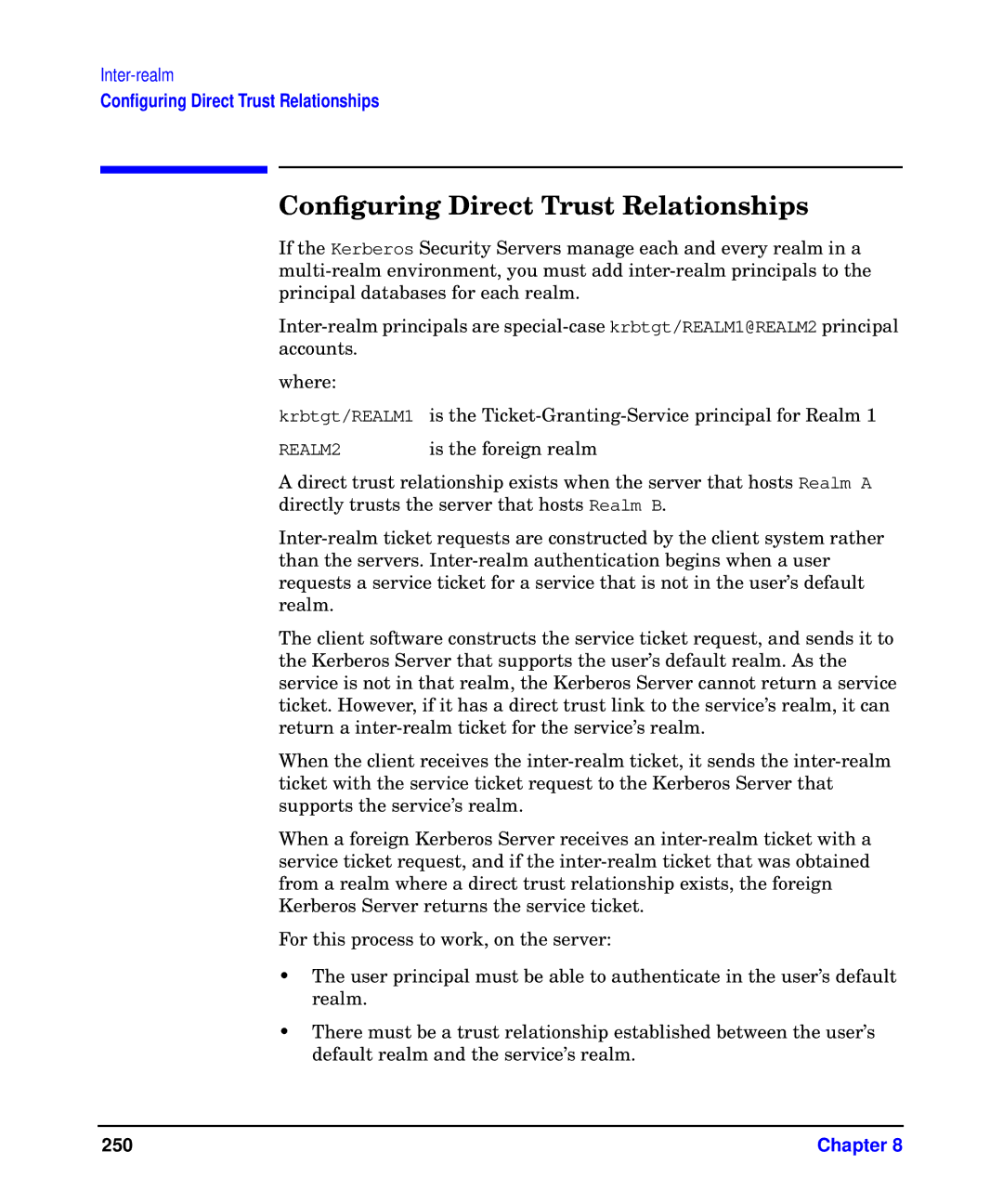
Inter-realm
Configuring Direct Trust Relationships
Configuring Direct Trust Relationships
If the Kerberos Security Servers manage each and every realm in a
where:
krbtgt/REALM1 is the
REALM2 | is the foreign realm |
A direct trust relationship exists when the server that hosts Realm A directly trusts the server that hosts Realm B.
The client software constructs the service ticket request, and sends it to the Kerberos Server that supports the user’s default realm. As the service is not in that realm, the Kerberos Server cannot return a service ticket. However, if it has a direct trust link to the service’s realm, it can return a
When the client receives the
When a foreign Kerberos Server receives an
For this process to work, on the server:
•The user principal must be able to authenticate in the user’s default realm.
•There must be a trust relationship established between the user’s default realm and the service’s realm.
250 | Chapter 8 |
